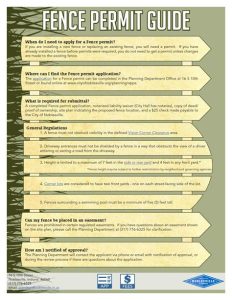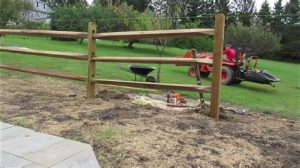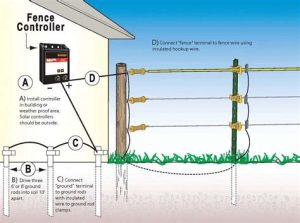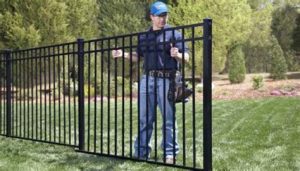Navigate local zoning codes, property line regulations, and HOA requirements to ensure successful fence installation while adhering to height restrictions in your area.When it comes to installing a fence, one of the most crucial steps is understanding the permitting requirements and height restrictions that may apply to your property. Navigating local zoning codes, property line regulations, and potential homeowners’ association (HOA) guidelines can be a daunting task for many homeowners. Each jurisdiction has its own unique set of rules, which can vary significantly based on location and community standards. This blog post will delve into the essential aspects of fence height restrictions, including how to research and comply with local regulations, the importance of consulting with HOAs, and the necessary steps to obtain building permits. Whether you’re looking to enhance your privacy, secure your yard, or beautify your landscape, being informed about these requirements will help you achieve your fencing goals without any legal hiccups.
Understanding Local Zoning Codes
Understanding local zoning codes is crucial for homeowners, businesses, and contractors alike. These codes govern how land can be used and dictate specific regulations that must be followed to ensure compliance with local laws. In most jurisdictions, zoning codes control various aspects including the types of buildings that can be constructed, their intended use, and the height restrictions applicable to fences and other structures.
The zoning codes are usually divided into different categories, such as residential, commercial, and industrial zones. Each of these categories has its specific regulations. For instance, in a residential zone, the codes may specify maximum fence heights, setback requirements, and even the types of materials that can be used. Therefore, anyone looking to put up a fence must first review these regulations to avoid potential fines or the forced removal of non-compliant structures.
It is also important to note that local zoning codes can vary significantly from one municipality to another. Therefore, homeowners should consult local government websites or contact their local planning office to obtain the most accurate and up-to-date information. Understanding these codes not only helps in complying with the law but also aids in maintaining property values and ensuring harmony within the neighborhood.
Researching Property Line Regulations
When it comes to understanding property line regulations, one must consider various factors that influence the ownership and use of land. These regulations define the boundaries of a property and dictate how that land can be utilized. To stay *compliant*, it is essential to conduct thorough research on local laws and ordinances.
One critical step in researching property line regulations is to obtain a survey of your property. A survey will provide a detailed map showing the exact boundaries, easements, and any encroachments. It’s advisable to hire a licensed surveyor for accurate results to avoid potential disputes with neighbors.
Additionally, local zoning codes may impose restrictions on what you can build near property lines. These regulations can vary significantly by jurisdiction, so it’s vital to check with local authorities or visit the zoning office.
Consulting with Homeowners’ Association
When considering the installation of a fence on your property, one of the first steps you should take is consulting with your Homeowners’ Association (HOA). These organizations often have specific rules and guidelines that govern the appearance and height of fences within the community.
The HOA guidelines can vary widely from one community to another, so it is essential to review these documents carefully.
- Height Restrictions: Many HOAs will stipulate maximum allowable heights for fences.
- Materials Allowed: Some associations may restrict certain materials or require specific types of fencing to maintain aesthetic consistency.
- Design and Color: The design and paint colors of a fence could also be regulated to ensure it fits with the community’s overall look.
Before investing time and money into your fencing project, reaching out to your HOA for approval or guidance can save you from potential future conflicts or fines. Often, the HOA will require you to submit a fence proposal, detailing materials, design, and proposed location before you can commence construction.
Utilizing these resources not only aids in compliance with local regulations but also fosters a cooperative relationship with your community. Always remember, taking the proactive step to consult with your HOA will enhance your chances of achieving the desired outcome for your fence installation.
Obtaining Building Permits for Fence
When it comes to building a fence, obtaining building permits is a crucial step that ensures your construction complies with local laws. Building permits are official approvals granted by your local government, allowing you to proceed with your project. Before starting, it’s essential to check whether your area requires such permits for fencing.
Each locality may have its own set of rules regarding what kinds of fences can be built, their height, and the materials to be used.
- Research Local Regulations: Before submitting your permit application, ensure you are familiar with local zoning codes and required building permits.
- Prepare Your Documents: Collect all necessary documents, including site plans and specifications for your proposed fence.
- Submit Your Application: Fill out your permit application accurately and pay any associated fees.
In some cases, approvals can take time, so it’s wise to plan ahead to avoid delays in your fencing project. Understanding the permitting process not only ensures compliance with local laws but also helps avoid potential fines or the need to remove an illegally constructed fence.
Adhering to Height Restrictions in Different Areas
When planning to install a fence around your property, one of the first things you need to consider is height restrictions. These restrictions can vary significantly based on your local regulations and the specific area in which you reside. It’s crucial to familiarize yourself with these regulations to ensure compliance and avoid potential fines or mandatory alterations to your fence.
Height restrictions often depend on several factors, including zoning codes and the purpose of the fence. For instance, residential areas may have different requirements compared to commercial or agricultural zones. Additionally, certain neighborhoods or municipalities may enforce stricter limitations to maintain aesthetic harmony and neighborhood standards.
| Zoning Type | Max Fence Height |
|---|---|
| Residential | 6 feet |
| Commercial | 8 feet |
| Agricultural | 10 feet |
| Pool Enclosures | 4 feet |
Another key aspect to consider is whether you live in an area governed by a Homeowners’ Association (HOA). Many HOAs have their own set of rules regarding fence height, material, and style, which may differ from the local zoning codes. Thus, it’s advisable to check with both your local government and your HOA to ensure your fence plans adhere to all applicable regulations.
In summary, adhering to height restrictions in different areas requires careful research and consideration of local regulations, zoning codes, and any HOA rules. By doing so, you can avoid the hassle of unnecessary delays or fines and ensure that your fencing project goes smoothly.
Frequently Asked Questions
What are the typical height restrictions for fences?
Typical height restrictions for fences can vary widely based on local ordinances, but they usually range from 3 to 6 feet for residential properties.
Why do municipalities enforce fence height restrictions?
Municipalities enforce fence height restrictions to maintain aesthetics, ensure safety, and prevent obstructing views or creating privacy issues for neighbors.
Are there different regulations for front yard versus backyard fences?
Yes, many municipalities have different regulations for front yard and backyard fences, often allowing taller fences in the backyard while limiting heights in the front yard for visibility and curb appeal.
What factors can influence fence height requirements?
Factors that can influence fence height requirements include zoning laws, lot size, type of property, and specific neighborhood regulations.
How can homeowners find the specific height restrictions for their area?
Homeowners can find specific height restrictions by contacting their local zoning office or checking municipal codes online.
What are the potential consequences of building a fence that exceeds height restrictions?
Building a fence that exceeds height restrictions can result in fines, legal action, or the requirement to remove or modify the fence.
Can homeowners apply for a variance to the fence height restrictions?
Yes, homeowners can apply for a variance to the fence height restrictions, but approval is not guaranteed and typically requires a valid justification and possibly public hearing.





